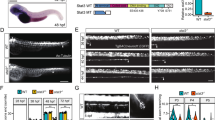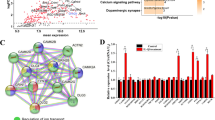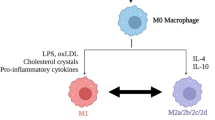Abstract
Adenylate cyclase-associated protein 1 (CAP1), a member of cyclase-associated proteins that regulating actin dynamics, was shown to regulate actin filaments, localize to dynamic actin structures and mediate such processes as establishment of cell polarity, motility, morphogenesis, receptor-mediated endocytosis and mRNA location. But little is known about the role of CAP1 during peripheral nervous system injury. Here, we found the spatiotemporal protein expression of CAP1 after sciatic nerve crush. After crush, CAP1 had an increased protein expression level, reached a peak at about day 5 and then returned to the normal level at 4 weeks, similar to Oct-6. Besides, in 5-day injured tissue, using double immunofluorescent staining we found CAP1 had a colocalization with S100 and Oct-6. In vitro, during the process of cAMP-induced Schwann cells differentiation, we observed enhanced expression of CAP1 and P0. Specially, CAP1-specific siRNA-tranfected SCs did not show significant actin structure which form cellure surface tension and protrusion shape after cAMP treatment. And we observed the interaction of CAP1 with actin and that CAP1-specific siRNA-transfected SCs had a decreased motility and migration. Together, all these data indicated that the change of CAP1 protein expression was associated with Schwann cells motility and differentiation after the crush of sciatic nerve.







Similar content being viewed by others
References
Arroyo EJ, Bermingham JJ, Rosenfeld MG, Scherer SS (1998) Promyelinating Schwann cells express Tst-1/SCIP/Oct-6. J Neurosci 18:7891–7902
Bertling E, Hotulainen P, Mattila PK, Matilainen T, Salminen M, Lappalainen P (2004) Cyclase-associated protein 1 (CAP1) promotes cofilin-induced actin dynamics in mammalian nonmuscle cells. Mol Biol Cell 15:2324–2334
Cao Y, Wang Q, Zhou Z, Wang Y, Liu Y, Ji Y, Liu F (2012) Changes of peroxisome proliferator-activated receptor-gamma on crushed rat sciatic nerves and differentiated primary Schwann cells. J Mol Neurosci 47:380–388
Charvet C, Canonigo AJ, Becart S, Maurer U, Miletic AV, Swat W, Deckert M, Altman A (2006) Vav1 promotes T cell cycle progression by linking TCR/CD28 costimulation to FOXO1 and p27kip1 expression. J Immunol 177:5024–5031
Chernousov MA, Carey DJ (2000) Schwann cell extracellular matrix molecules and their receptors. Histol Histopathol 15:593–601
Court FA, Wrabetz L, Feltri ML (2006) Basal lamina: Schwann cells wrap to the rhythm of space-time. Curr Opin Neurobiol 16:501–507
Cui Z, Tao T, Cheng C, Yang J, Shen Q, Ji Y, Li X, Liu H, Shen A, Lu X (2010) SSeCKS promote beta-amyloid-induced PC12 cells neurotoxicity by up-regulating tau phosphorylation in Alzheimer’s disease. Mol Cell Biochem 340:257–263
Eser F, Aktekin LA, Bodur H, Atan C (2009) Etiological factors of traumatic peripheral nerve injuries. Neurol India 57:434–437
Fawcett JW, Keynes RJ (1990) Peripheral nerve regeneration. Annu Rev Neurosci 13:43–60
Freeman NL, Chen Z, Horenstein J, Weber A, Field J (1995) An actin monomer binding activity localizes to the carboxyl-terminal half of the Saccharomyces cerevisiae cyclase-associated protein. J Biol Chem 270:5680–5685
Gerst JE, Ferguson K, Vojtek A, Wigler M, Field J (1991) CAP is a bifunctional component of the Saccharomyces cerevisiae adenylyl cyclase complex. Mol Cell Biol 11:1248–1257
Hall S (2005) The response to injury in the peripheral nervous system. J Bone Joint Surg Br 87:1309–1319
Hubberstey AV, Mottillo EP (2002) Cyclase-associated proteins: CAPacity for linking signal transduction and actin polymerization. FASEB J 16:487–499
Hubberstey A, Yu G, Loewith R, Lakusta C, Young D (1996) Mammalian CAP interacts with CAP, CAP2, and actin. J Cell Biochem 61:459–466
Ide C (1996) Peripheral nerve regeneration. Neurosci Res 25:101–121
Kawamukai M, Gerst J, Field J, Riggs M, Rodgers L, Wigler M, Young D (1992) Genetic and biochemical analysis of the adenylyl cyclase-associated protein, cap, in Schizosaccharomyces pombe. Mol Biol Cell 3:167–180
Konakahara S, Saitou M, Hori S, Nakane T, Murai K, Itoh R, Shinsaka A, Kohroki J, Kawakami T, Kajikawa M, Masuho Y (2011) A neuronal transmembrane protein LRFN4 induces monocyte/macrophage migration via actin cytoskeleton reorganization. FEBS Lett 585:2377–2384
Konakahara S, Suzuki Y, Kawakami T, Saitou M, Kajikawa M, Masuho Y, Kohroki J (2012) A neuronal transmembrane protein LRFN4 complexes with 14-3-3s and NCK1 to induce morphological change in monocytic cells via Rac1-mediated actin cytoskeleton reorganization. FEBS Lett 586:2251–2259
Lepelletier Y, Moura IC, Hadj-Slimane R, Renand A, Fiorentino S, Baude C, Shirvan A, Barzilai A, Hermine O (2006) Immunosuppressive role of semaphorin-3A on T cell proliferation is mediated by inhibition of actin cytoskeleton reorganization. Eur J Immunol 36:1782–1793
Mintzer KA, Field J (1994) Interactions between adenylyl cyclase, CAP and RAS from Saccharomyces cerevisiae. Cell Signal 6:681–694
Moriyama K, Yahara I (2002) Human CAP1 is a key factor in the recycling of cofilin and actin for rapid actin turnover. J Cell Sci 115:1591–1601
Muller HW (1996) Gene expression in nerve regeneration. Diabet Med 13:682
Nishida Y, Shima F, Sen H, Tanaka Y, Yanagihara C, Yamawaki-Kataoka Y, Kariya K, Kataoka T (1998) Coiled-coil interaction of N-terminal 36 residues of cyclase-associated protein with adenylyl cyclase is sufficient for its function in Saccharomyces cerevisiae ras pathway. J Biol Chem 273:28019–28024
Papakonstanti EA, Stournaras C (2008) Cell responses regulated by early reorganization of actin cytoskeleton. FEBS Lett 582:2120–2127
Peche V, Shekar S, Leichter M, Korte H, Schroder R, Schleicher M, Holak TA, Clemen CS, Ramanath-Y B, Pfitzer G, Karakesisoglou I, Noegel AA (2007) CAP2, cyclase-associated protein 2, is a dual compartment protein. Cell Mol Life Sci 64:2702–2715
Raff MC, Hornby-Smith A, Brockes JP (1978) Cyclic AMP as a mitogenic signal for cultured rat Schwann cells. Nature 273:672–673
Ribeiro-Resende VT, Koenig B, Nichterwitz S, Oberhoffner S, Schlosshauer B (2009) Strategies for inducing the formation of bands of Bungner in peripheral nerve regeneration. Biomaterials 30:5251–5259
Robinson LR (2000) Traumatic injury to peripheral nerves. Muscle Nerve 23:863–873
Swiston J, Hubberstey A, Yu G, Young D (1995) Differential expression of CAP and CAP2 in adult rat tissues. Gene 165:273–277
Tao T, Ji Y, Cheng C, Yang H, Liu H, Sun L, Qin Y, Yang J, Wang H, Shen A (2009) Tumor necrosis factor-alpha inhibits Schwann cell proliferation by up-regulating Src-suppressed protein kinase C substrate expression. J Neurochem 111:647–655
Yan M, Cheng C, Shao X, Qian J, Shen A, Xia C (2008) Expression change of beta-1,4 galactosyltransferase I, V mRNAs and Galbeta1, 4GlcNAc group in rat sciatic nerve after crush. J Mol Histol 39:317–328
Yu J, Wang C, Palmieri SJ, Haarer BK, Field J (1999) A cytoskeletal localizing domain in the cyclase-associated protein, CAP/Srv2p, regulates access to a distant SH3-binding site. J Biol Chem 274:19985–19991
Yue J, Shukla R, Accardi R, Zanella-Cleon I, Siouda M, Cros MP, Krutovskikh V, Hussain I, Niu Y, Hu S, Becchi M, Jurdic P, Tommasino M, Sylla BS (2011) Cutaneous human papillomavirus type 38 E7 regulates actin cytoskeleton structure for increasing cell proliferation through CK2 and the eukaryotic elongation factor 1A. J Virol 85:8477–8494
Zhu L, Yan Y, Ke K, Wu X, Gao Y, Shen A, Li J, Kang L, Zhang G, Wu Q, Yang H (2012) Dynamic change of Numbl expression after sciatic nerve crush and its role in Schwann cell differentiation. J Neurosci Res 90:1557–1565
Author information
Authors and Affiliations
Corresponding author
Additional information
Xinhui Zhu and Li Yao have contributed equally to this work.
Rights and permissions
About this article
Cite this article
Zhu, X., Yao, L., Guo, A. et al. CAP1 was associated with actin and involved in Schwann cell differentiation and motility after sciatic nerve injury. J Mol Hist 45, 337–348 (2014). https://doi.org/10.1007/s10735-013-9554-z
Received:
Accepted:
Published:
Issue Date:
DOI: https://doi.org/10.1007/s10735-013-9554-z




